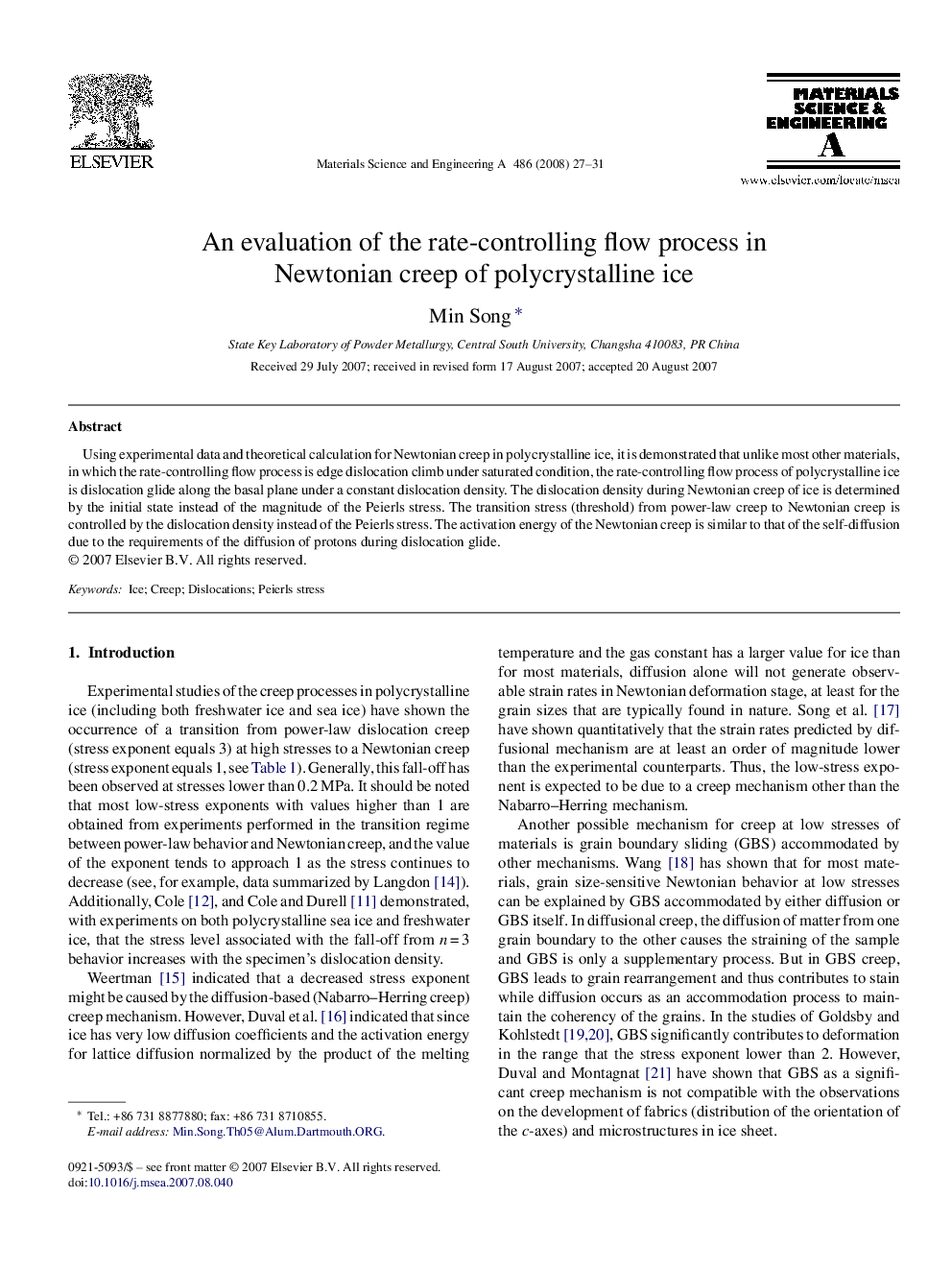| Article ID | Journal | Published Year | Pages | File Type |
|---|---|---|---|---|
| 1582707 | Materials Science and Engineering: A | 2008 | 5 Pages |
Using experimental data and theoretical calculation for Newtonian creep in polycrystalline ice, it is demonstrated that unlike most other materials, in which the rate-controlling flow process is edge dislocation climb under saturated condition, the rate-controlling flow process of polycrystalline ice is dislocation glide along the basal plane under a constant dislocation density. The dislocation density during Newtonian creep of ice is determined by the initial state instead of the magnitude of the Peierls stress. The transition stress (threshold) from power-law creep to Newtonian creep is controlled by the dislocation density instead of the Peierls stress. The activation energy of the Newtonian creep is similar to that of the self-diffusion due to the requirements of the diffusion of protons during dislocation glide.
